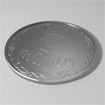Added: 6 October, 2007
Group: Windows
Boot WinXP quikly
Author: Naomi
page: 1
Windows rapid booting
To avoid your Windows system taking too much time to boot, follow this tutorial and find out how to do that.
Waiting for your system to boot up can be a nasty thing, more important it takes some time.
It usually happens when there`s a bunch of stuff piling up on the disc space, sucking up your memory. To avoid this unpleasant situation take these steps and start using them on your own computer.
First of all you need to open one of the text editor programs you have, such as notepad, and type the followings.
"del c:>windows>prefetch>ntosboot-*.* >q" (without the quotes) and save as "ntosboot.bat" in c:
Go to "Run" from "Start" menu and type "gpedit.msc"
In "Computer Configuration" tab find the "Windows Settings" option and double click on it, then again double click on "Shutdown" which takes place in the right window.
Next thing is to open a new window, click "Add" , "Browse" , and find your "ntosboot.bat" file and click "Open" button.
When done, you`re supposed to be able to confirm the process by clicking "OK" button, "Apply" button and yet another "OK" to exit.
Select "Run" from the "Start Menu" and enter the following file "devmgmt.msc".
Double click on "IDE/ATAPI controllers" then right click of the mouse on "Primary IDE Channel", selecting "Properties".
Select the "Advanced Settings" tab then on the device or the one that doesn't have "device type" greyed out, select "none" instead of "autodetect" and click "OK". Right click on "Secondary IDE channel", select "Properties" and repeat this: "Advanced Settings" then select "none" instead of "autodetect" and click "OK".
If the following instructions are entered correctly, you`ll be free to reboot your computer and see the results.
GO to: Page 1 : Windows rapid booting
TechTut.com This tutorial is copyrighted. Partial duplication or full duplication is prohibited and illegal. Translation or usage of any kind without author�s permission is illegal.

 Join our RSS feed
Join our RSS feedUse our RSS feed to get the latest published tutorials directly to your news reader.










